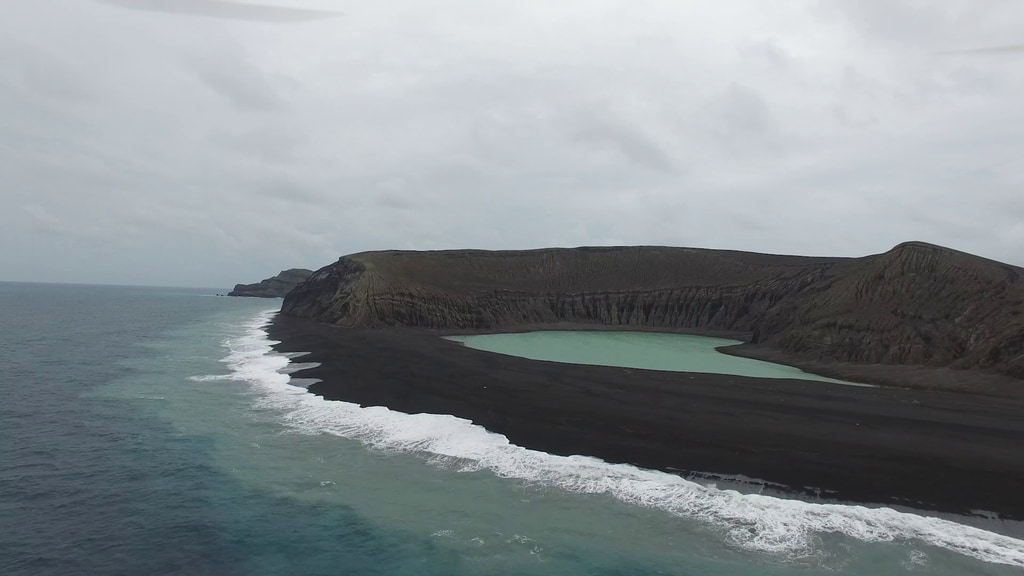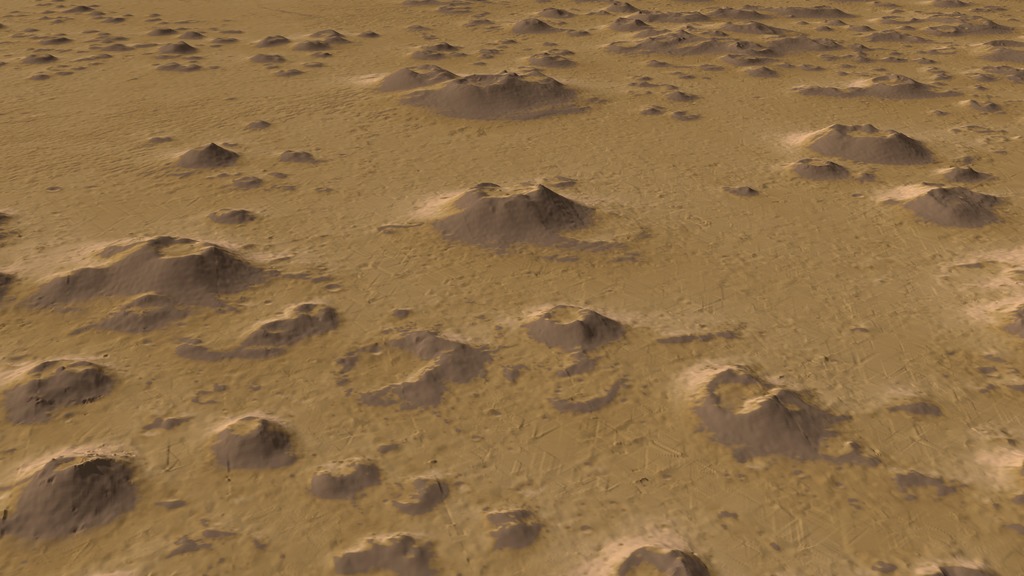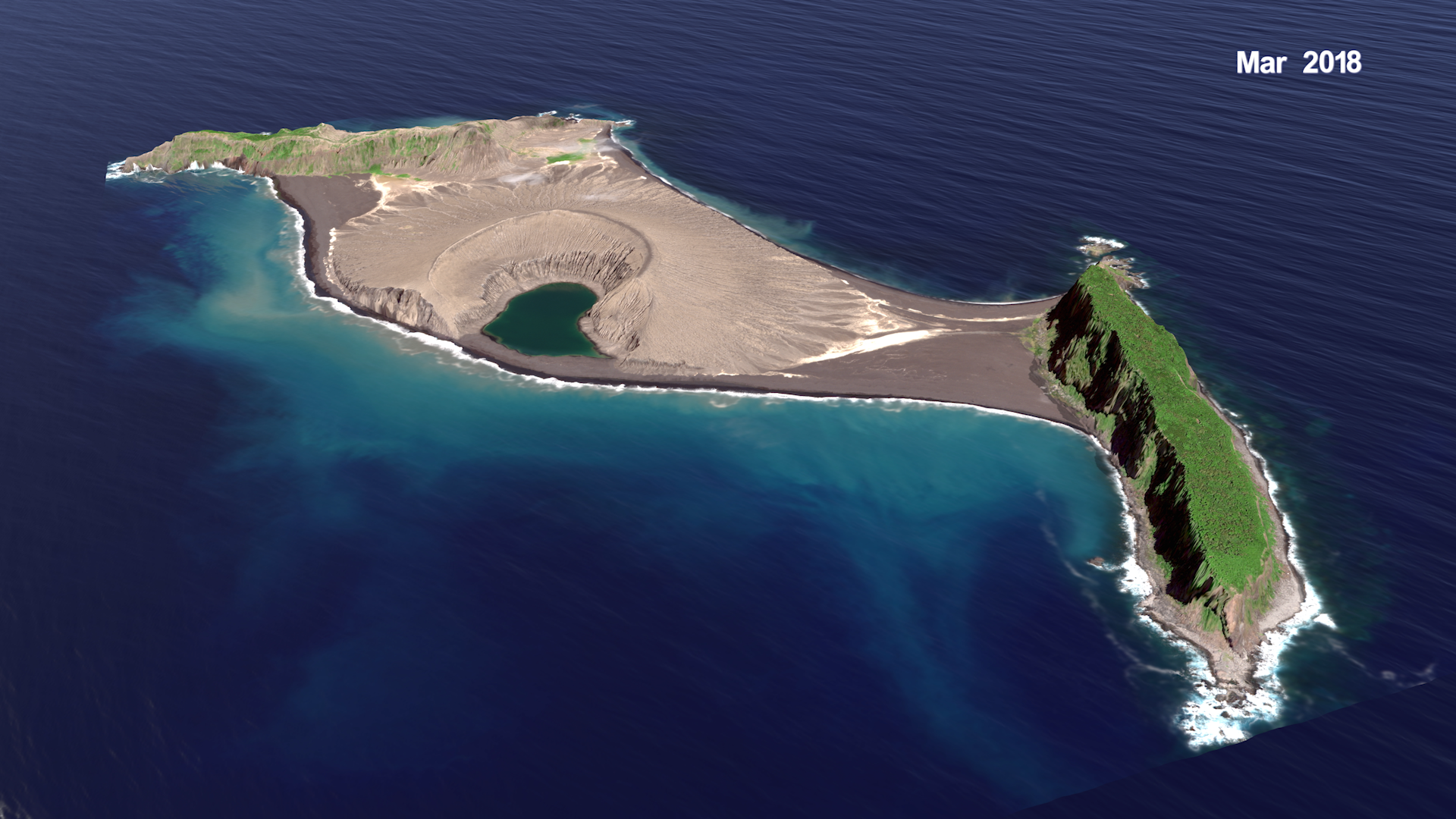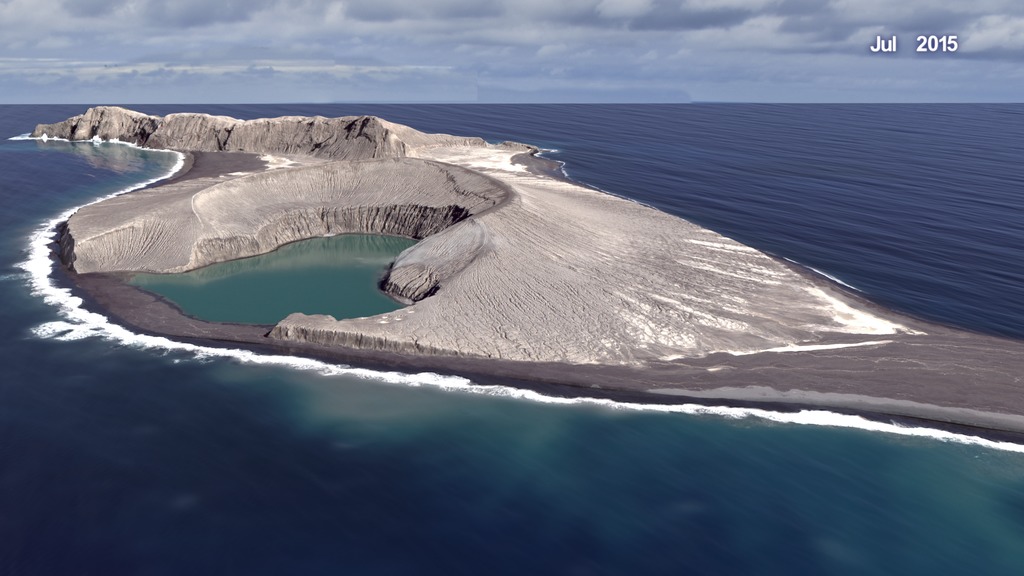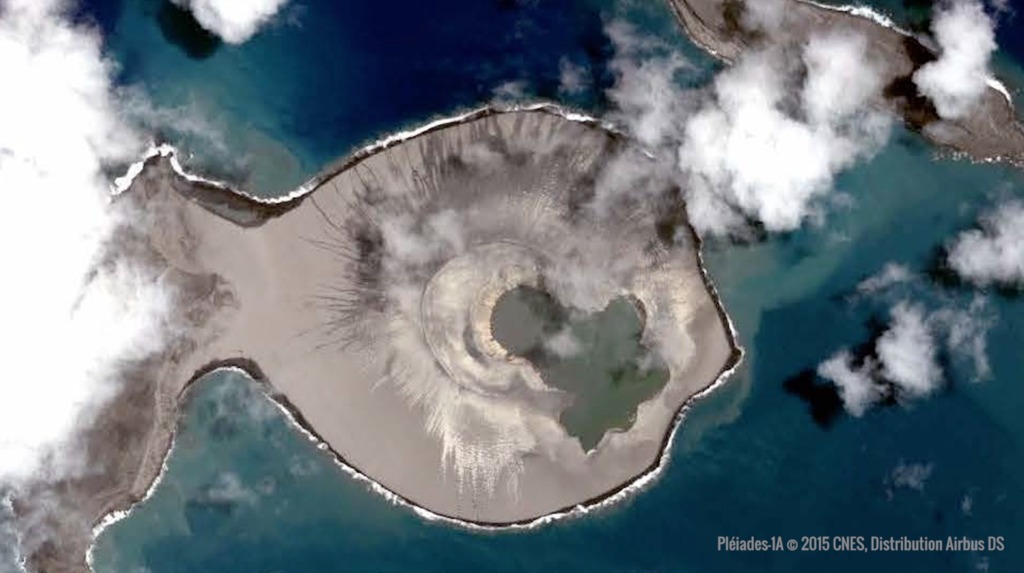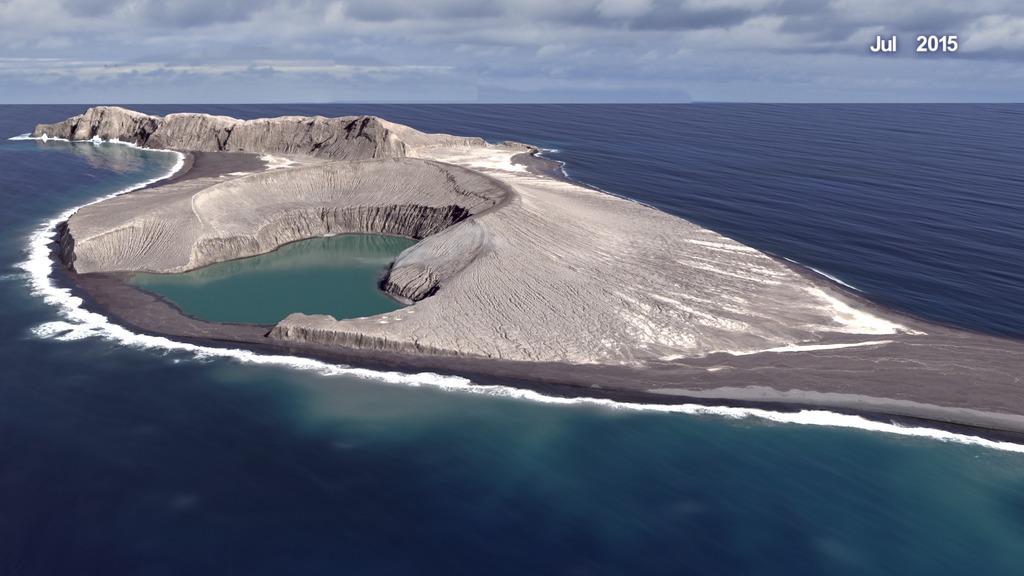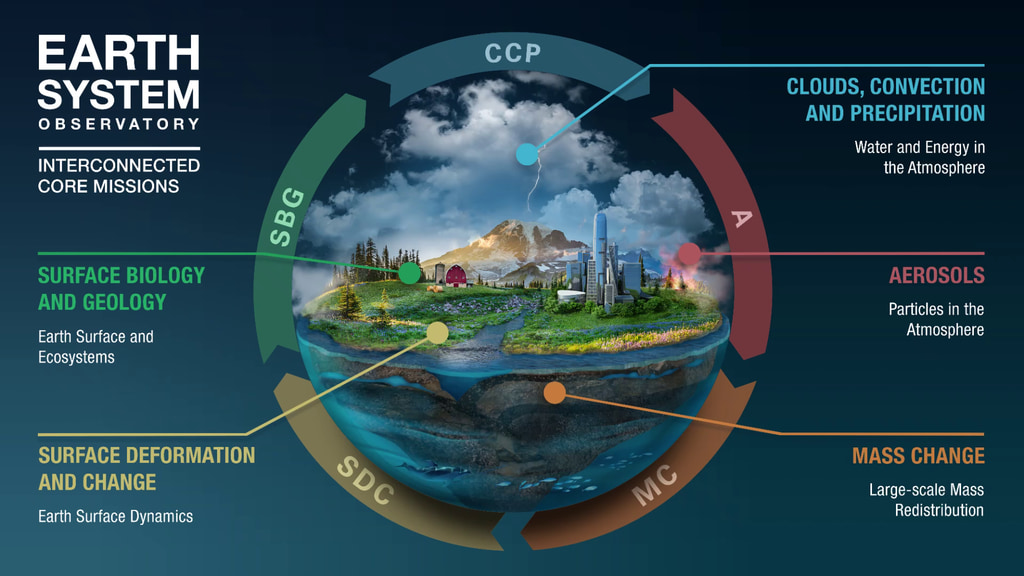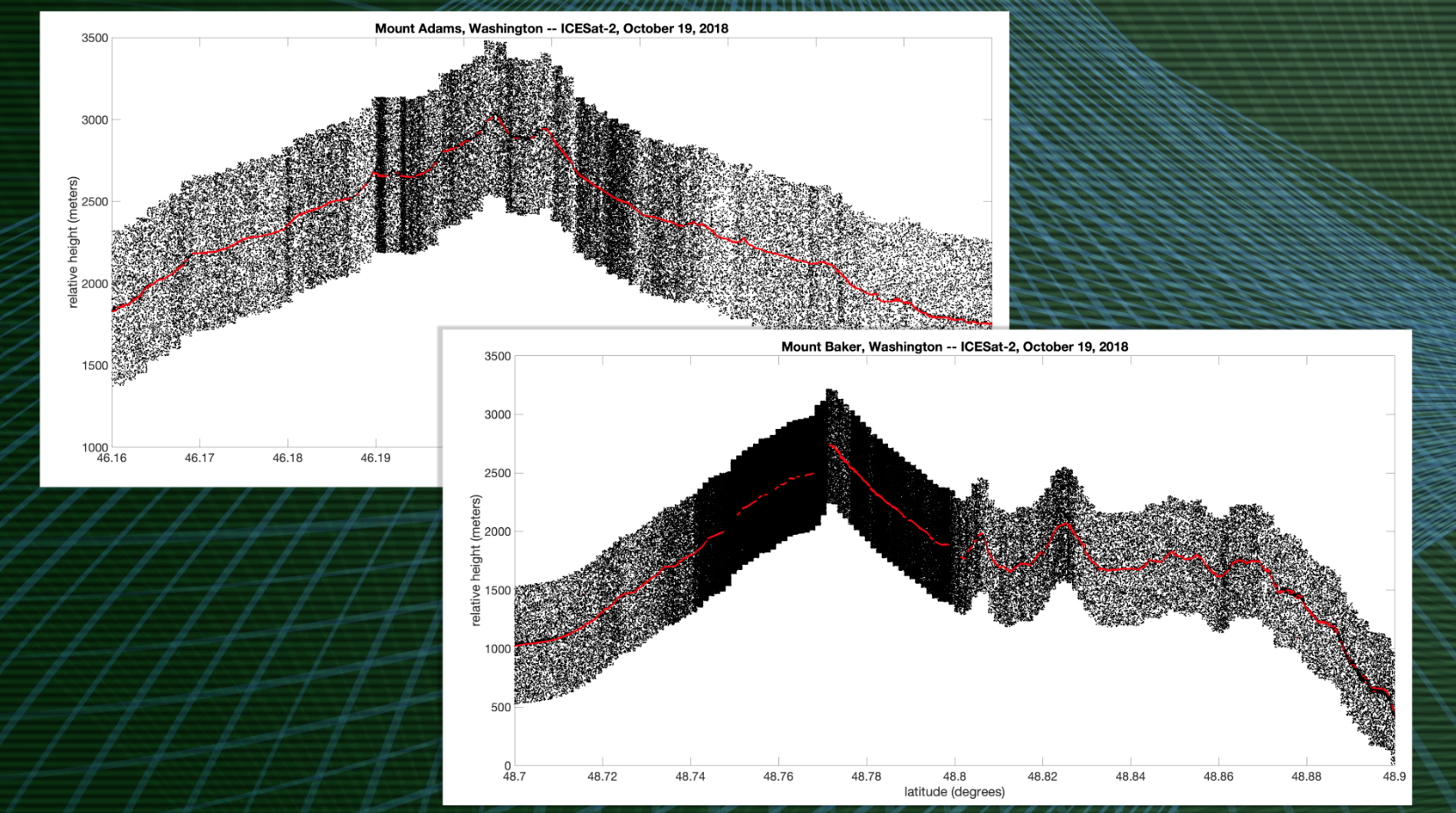New Island forms in Tonga (Updated)
The evolution of the newly-erupted "surtseyan" island (~ 180 hectares in area) in the Kingdom of Tonga in the Southwestern Pacific is documented in a time-lapse sequences of perspective views using a time-series of DigitalGlobe WorldView images from just after the eruption ended in late January 2015 until March 2018. These meter-resolution views were generated using Digital Elevation Models (DEMs) created by the NASA- led science team using stereo-pairs of DigitalGlobe Worldview images, and have allowed the erosional history of this unique island to be studied from a never-before-possible spaceborne perspective. The impact of marine abrasion on the somewhat fragile volcanic-ash landscapes is evident as the southern and southeastern margins of the new island, informally known as Hunga Tonga Hunga Ha'apai (HTHH), recede, while deposition of a widening isthmus grows to the northeast.
Research results from NASA-funded science team led by James B. Garvin (NASA GSFC), Daniel A. Slayback (SSAI), Vicki Ferrini (Columbia) in the AGU's Geophysical Research Letters journal suggest the island's lifetime may be extended for another 25-30 years if geochemical fortification continues to protect key regions. The HTHH island is the first surtseyan eruption-based island to have persisted as "new land" for more than 6 months since Surtsey erupted near Iceland in 1963. Studies of the landscape evolution of pristine volcanic islands of this variety previously relied on a combination of aerial photography, field mapping, and laboratory sample analysis, but this new work enables an optimized approach via advanced satellite optical and radar imaging in combination with ship-based bathymetric mapping. Results of this work can be applied to understanding numerous small volcanic landforms on Mars whose formation may have been in shallow-water environments during epochs when persistent surface water was present.
Research results from NASA-funded science team led by James B. Garvin (NASA GSFC), Daniel A. Slayback (SSAI), Vicki Ferrini (Columbia) in the AGU's Geophysical Research Letters journal suggest the island's lifetime may be extended for another 25-30 years if geochemical fortification continues to protect key regions. The HTHH island is the first surtseyan eruption-based island to have persisted as "new land" for more than 6 months since Surtsey erupted near Iceland in 1963. Studies of the landscape evolution of pristine volcanic islands of this variety previously relied on a combination of aerial photography, field mapping, and laboratory sample analysis, but this new work enables an optimized approach via advanced satellite optical and radar imaging in combination with ship-based bathymetric mapping. Results of this work can be applied to understanding numerous small volcanic landforms on Mars whose formation may have been in shallow-water environments during epochs when persistent surface water was present.

Credits
Please give credit for this item to:
NASA's Scientific Visualization Studio
NASA's Scientific Visualization Studio
-
Visualizer
- Cindy Starr (Global Science and Technology, Inc.)
-
Scientists
- James Garvin (NASA, Chief Scientist Goddard)
- Daniel A. Slayback (SSAI)
- Vicki Ferrini (Lamont-Doherty Earth Observatory, Columbia University)
-
Project support
- Eric Sokolowsky (Global Science and Technology, Inc.)
- Joycelyn Thomson Jones (NASA/GSFC)
- Leann Johnson (Global Science and Technology, Inc.)
-
Technical support
- Ian Jones (ADNET Systems, Inc.)
- Laurence Schuler (ADNET Systems, Inc.)
Release date
This page was originally published on Wednesday, March 27, 2019.
This page was last updated on Sunday, February 2, 2025 at 12:12 AM EST.
Related papers
Garvin J. B. et al. (GRL 45, no. 8, pp. 3445–3453; https://doi.org/10.1002/2017GL076621)
Garvin J. B. et al. (GRL 45, no. 8, pp. 3445–3453; https://doi.org/10.1002/2017GL076621)
Datasets used
-
WorldView-2 © 2015 DigitalGlobe
ID: 991 -
WorldView-3 © 2015 DigitalGlobe
ID: 992 -
WorldView-2 © 2016 DigitalGlobe
ID: 993 -
WorldView-3 © 2016 DigitalGlobe
ID: 994 -
WorldView-2 © 2017 DigitalGlobe
ID: 995 -
WorldView-2 © 2010 DigitalGlobe
ID: 996 -
Pléiades-1A © 2015 CNES, Distribution Airbus DS
ID: 997 -
Worldview-2 © 2018 DigitalGlobe
ID: 1006
Note: While we identify the data sets used on this page, we do not store any further details, nor the data sets themselves on our site.
